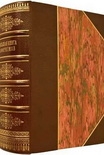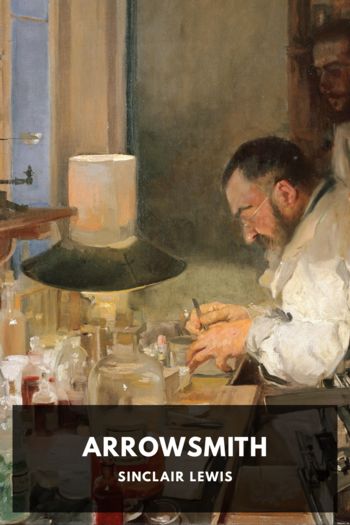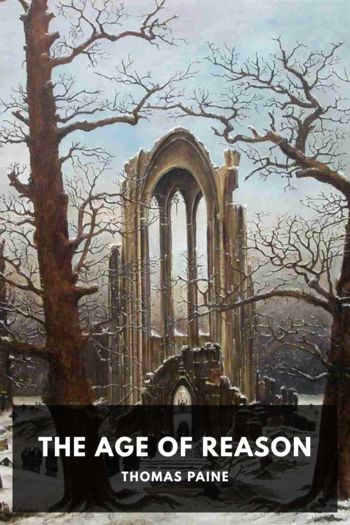Holocaust: The Nazi Persecution and Murder of the Jews by Peter Longerich (booksvooks TXT) 📕

Read free book «Holocaust: The Nazi Persecution and Murder of the Jews by Peter Longerich (booksvooks TXT) 📕» - read online or download for free at americanlibrarybooks.com
- Author: Peter Longerich
Read book online «Holocaust: The Nazi Persecution and Murder of the Jews by Peter Longerich (booksvooks TXT) 📕». Author - Peter Longerich
compared the fundamentally different psychological constitution of Jews and ‘Aryans’
(Lockot, Erinnern, 87 ff.).
33. Hannsjost Lixfeld, Folklore and Fascism: The Reich Institute for German Volkskunde
(Bloomington, Ind., 1994). James R. Dow and Hannsjost Lixfeld, eds, The Nazification
of an Academic Discipline: Folklore in the Third Reich (Bloomington, Ind., 1994); Helge
Gerndt, ed., Volkskunde und Nationalsozialismus. Referate und Diskussionen einer
Tagung der Deutschen Gesellschaft für Volkskunde, München 23 bis 25 Oktober 1986
(Munich, 1987); Wolfgang Jacobeit, Hannsjost Lixfeld, Olaf Blochhorn, eds, Völkische
Wissenschaft. Gestalten und Tendenzen der deutschen und österreichischen Volkskunde
in der ersten Hälfte des 20. Jahrhunderts. (Vienna, Cologne, and Weimar, 1994);
Gretchen E. Schafft, From Racism to Genocide: Anthropology in the Third Reich
(Urbana and Chicago, 2004). Contemporary work: Adolf Spamer, ed., Die deutsche
Volkskunde, 2 vols, 2nd edn (Leipzig and Berlin, 1934/5) provides a very good survey of
Notes to pages 77–79
461
the efforts of the various divisions of Volkskunde to demonstrate the homogeneity and
exclusiveness of German national culture in spite of all empirical findings to the
contrary.
34. Karl Kaiser, Lesebuch zur Geschichte der deutschen Volkskunde (Munich, 1939), 214; cf.
Christoph Daxelmüller, ‘Nationalsozialistisches Kulturverständnis und das Ende der
jüdischen Volkskunde’, in Gerndt, Volkskunde und Nationalsozialismus, 149–68.
35. See in particular the programmatic text by Karl Heinz Pfeffer: Die deutsche Schule der Soziologie (Leipzig, 1939) (quotation p. 3). As a further example one might quote Max
Hildebert Boehm, Volkskunde (Berlin, 1937), 3: ‘By being associated with the revolu-
tionary trends of the age, which Riehl fought passionately against, sociology inevitably
acquired a highly international character. It had an equally subversive effect on state
and Volk through its abstract way of thinking about society, so it is no coincidence that Jewry in particular took it on board. Its chief area of interest was the life-forms of the urbanized masses.’ For another programmatically important contribution see Gunther
Ipsen, Programm einer Soziologie des Deutschen Volkstums (Berlin, 1933). Research
literature: Ottheim Rammstedt, Deutsche Soziologie 1933–1945. Die Normalität einer
Anpassung (Frankfurt a. M., 1986); Joachim S. Hohmann, ‘ “Instrument von Kontrolle
und Lenkung” Ländliche Soziologie unterm Hakenkreuz’, ZAA 45 (1997), 227–35;
Carsten Klingemann, Soziologie im Dritten Reich (Baden-Baden, 1996).
36. Rammstedt, Soziologie, 165.
37. Alan Steinweis, ‘Nazi Historical Scholarship and the “Jewish Question” ’, in Wolfgang Bialas and Anselm Rabinbach, eds, Nazism and the Humanities (Oxford, 2007);
Michael Fahlbusch, Wissenschaft im Dienst der nationalsozialistischen Politik? Die
Volksdeutschen ‘Forschungsgemeinschaften’ von 1931–1945 (Baden-Baden, 1999), 887;
Ingo Haar, Historiker im Nationalsozialismus. Deutsche Geschichtswissenschaft und
der ‘Volkstumskampf’ im Osten (Göttingen, 2000); Willi Oberkrome, Volksgeschichte:
Methodische Innovation und völkische Ideologisierung in der deutschen Geschichtswis-
senschaft 1918–1945 (Göttingen, 1993).
38. See Patricia von Papen, ‘Schützenhilfe nationalsozialistischer Judenpolitik. Die
“Judenforschung” des “Reichsinstituts für Geschichte des neuen Deutschland”,
1933–1945’, in Fritz Bauer Institut, ed., ‘Beseitigung des jüdischen Einflusses . . . ’.
Antisemitische Forschung, Eliten und Karrieren im Nationalsozialismus (Frankfurt
and New York, 1999), 17–43; and Dieter Schiefelbein, ‘Das “Institut zur Erforschung
der Judenfrage in Frankfurt am Main”. Antisemitismus als Karrieresprungbrett im
NS-Staat’, ibid. 43–72.
39. Oberkrome, Volksgeschichte, 191 (the man in question is Kleophas Pleyer). See also
Michael Burleigh, Germany Turns Eastwards: A Study of Ostforschung in the Third
Reich (Cambridge, 1988).
40. Lutz Raphael, ‘Radikales Ordnungsdenken und die Organisation totalitärer Herrschaft:
Weltanschauungseliten und Humanwissenschaftler im NS-Regime’, Geschichte und
Gesellschaft 27 (2001), 5–40, 15 ff.; Bernd Rüthers, Entartetes Recht. Rechtslehren und
Kronjuristen im Dritten Reich, 2nd edn (Munich, 1989); Michael Stolleis, Recht im
Unrecht. Studien zur Rechtsgeschichte des Nationalsozialiszmus (Frankfurt, 1994); Arno
Buschmann, Nationalsozialistische Weltanschauung und Gesetzgebung: 1933–1945,
2 vols (Vienna, 2000).
462
Notes to pages 79–82
41. ‘Die immanente, gemeinschaftsverbindliche Rechtsauffassung kann sich nur bilden aus
der Gemeinschaft; sie hat darum eine wirkliche, das heißt durch Artgleichheit und
gemeinsame Unterscheidung von Freund und Feind gebildete Gemeinschaft zur Vor-
aussetzung’ (Ernst Forsthoff, ‘Recht, Richter und nationalsozialistische Revolution’,
Deutsches Adelsblatt (1933), 714–15); cf. Diemut Majer, Grundlagen des nationalsozia-
listischen Rechtssystems (Stuttgart 1987), 122.
42. Revealed with particular vividness in the contributions to the congress held in 1936: Die deutsche Rechtswissenschaft im Kampf gegen den jüdischen Geist. An account of the
congress is given in Das Judentum in der Rechtswissenschaft, 8 vols (Berlin, 1936). See
Christian Busse, ‘ “Eine Maske ist gefallen”. Die Berliner Tagung “Das Judentum und
die Rechtswissenschaft” 3./4. Oktober 1936’, Kritische Justiz 33 (2000), 580–93.
43. Diemut Majer, ‘Fremdvölkische’ im Dritten Reich. Beitrag zur nationalsozialistichen
Rechtssetzung und Rechspraxis in Verwaltung und Justiz unter besonderer Berücksich-
tigung der eingegliederten Ostgebiete und des Generalgouvernements (Boppard, 1981).
44. Goebbels in his speech at the opening of the Reichskulturkammer (Reich Chamber of
Culture) on 15 Nov. 1933, ‘Die deutsche Kultur vor neuen Aufgaben’, printed in Joseph
Goebbels, Signale der neuen Zeit (Munich, 1934), 323–36, 328.
45. ‘Der deutschen Kultur Zukunftsaufgabe’, printed in Ernst Adolf Dreyer, ed., Deutsche
Kultur im neuen Reich. Wesen, Aufgabe und Ziel der Reichskulturkammer (Berlin,
1934), 9–22.
46. This is apparent, for example, in Hitler’s attempt, in his speech at the launch of the Große Deutsche Kunstausstellung (Great German Art Exhibition) in Munich in 1937,
to define the concept of ‘German’ in art: according to this, ‘being German’ in art meant
‘being clear’, ‘logical and above all also true’. In, Peter-Klaus Schustered, Die ‘Kunst-
stadt’ Munich 1937. Nationalsozialismus und ‘Entartete Kunst’ (Munich, 1987), 242–52,
246.
47. Franz Dröge and Michael Müller, Die Macht der Schönheit. Avantgarde und Faschis-
mus oder die Geburt der Massenkultur (Hamburg, 1995), esp. 231; Christian Ehalt,
Inszenierung der Gewalt: Kunst und Alltagskultur im Nationalsozialismus (Frankfurt
a. M., 1996); Alan E. Steinweis, Art, Ideology, and Economics in Nazi Germany: The
Reich Chambers of Music, Theater, and the Visual Arts (Chapel Hill, NC, and London,
1993). On the fruitless efforts to define ‘Deutschtum’ in music, see especially Pamela M.
Potter, Die deutscheste der Künste. Musikwissenschaft und Gesellschaft von der
Weimarer Republik bis zum Ende des Dritten Reiches (Stuttgart, 2000), 251 ff.; and
Michael Meyer, The Politics of Music in the Third Reich, 2nd edn (New York, 1993),
253 ff.; on the comparison between ‘German’ and ‘Jewish’ music see Michael H. Kater,
Die mißbrauchte Muse. Musiker im Dritten Reich (Vienna and Munich, 1998), 147 ff.; on
the ‘Aryanization’ of musical life, Erik Levi, Music in the Third Reich (Basingstoke,
1994), 41 ff.
48. Thus, for example, in Hitler’s opening speech at the launch of the Great German Art
Exhibition in 1937, quoted in Schustered, Kunststadt, 243: Jewry had ‘taken over those
methods and institutions that form public opinion and finally govern it. Jewry was
particularly able to use its position in the press, with the help of so-called art criticism, not only gradually to confuse views of the





Comments (0)